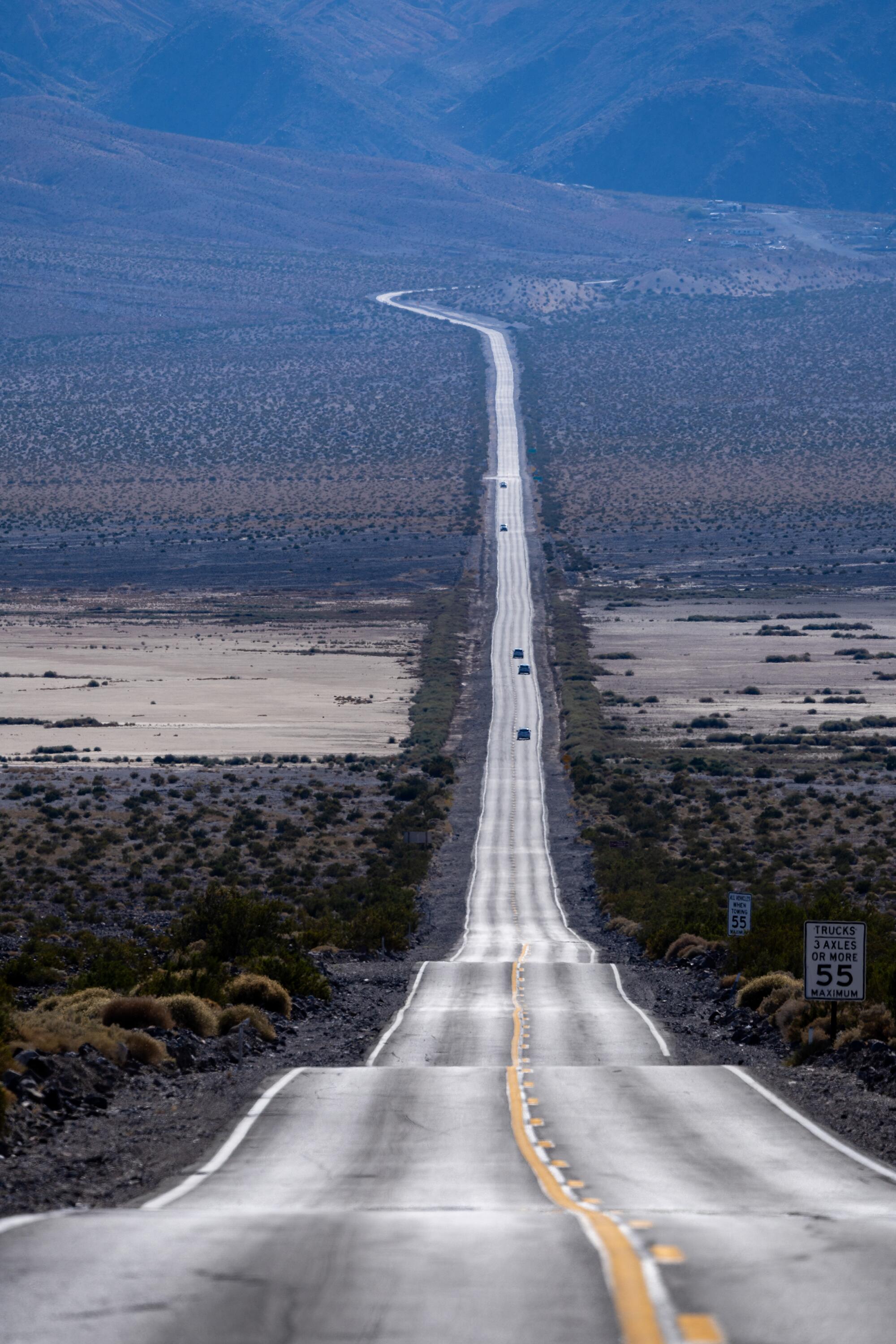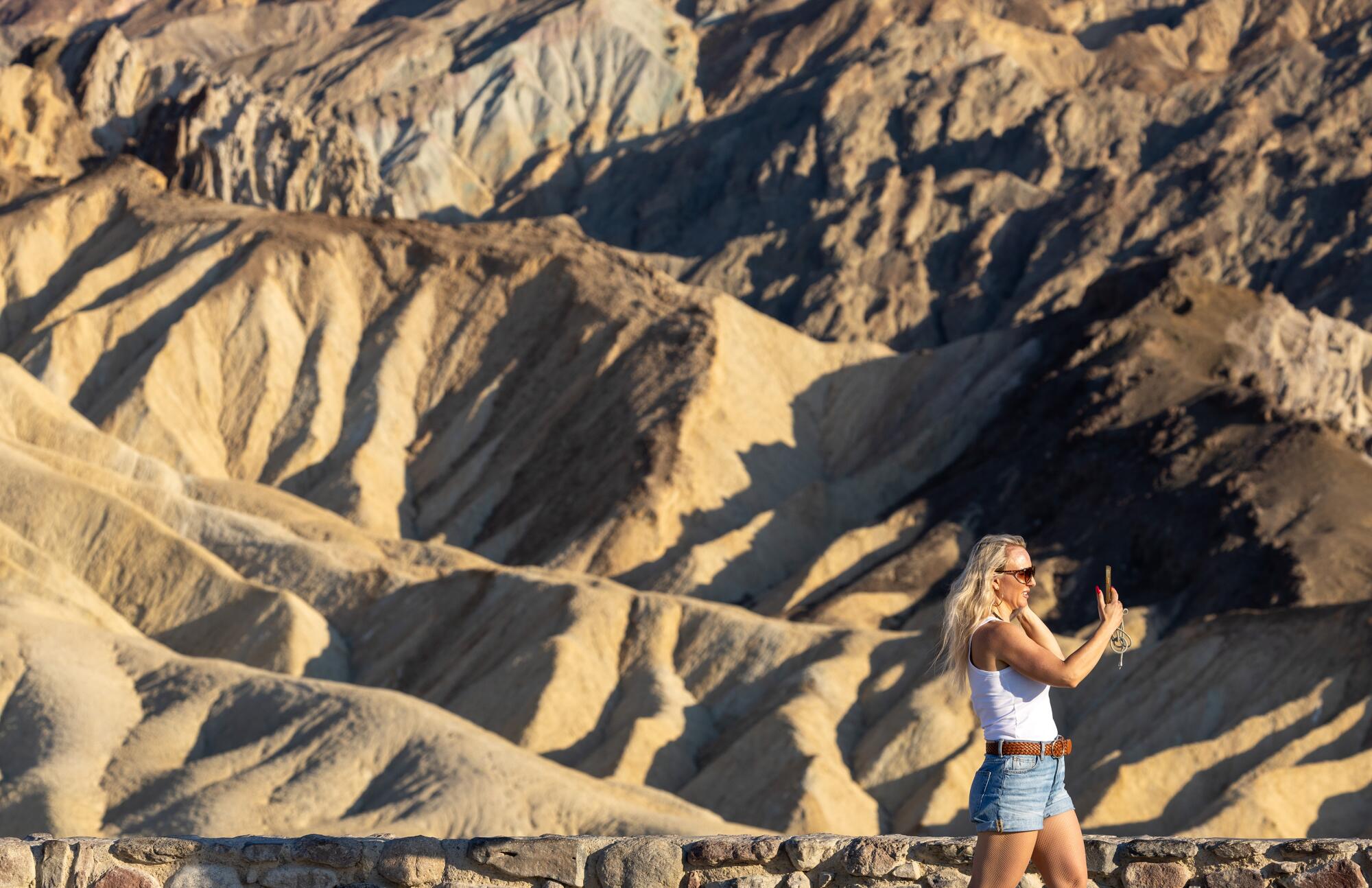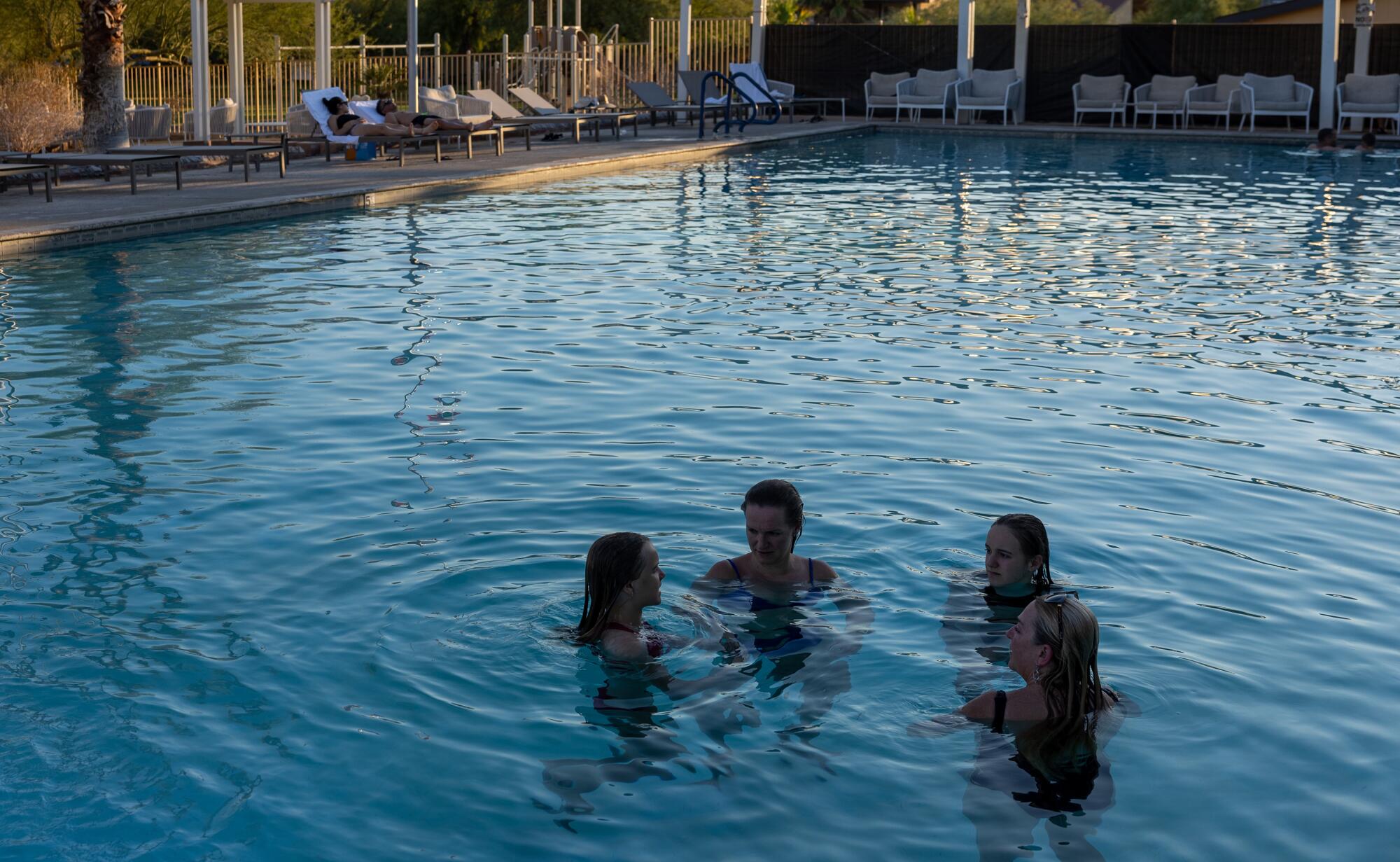When the temperature soared to 128 degrees, Death Valley National Park rangers called A group of six motorcyclists were harassedAll available medics responded to the scene and rangers sent two ambulances to the park.
It was “an all-encompassing call,” said Spencer Solomon, emergency medical coordinator for Death Valley National Park. The superheated air was too thin for an emergency helicopter to respond, but the team called for help from nearby fire departments.
They arrived Saturday to find the motorcyclist unconscious and medics unable to revive him. Another rider, who was knocked unconscious, was loaded into an ambulance, where emergency medical professionals attempted to quickly cool the victim with ice as he was transported to a Las Vegas intensive care unit. Four other motorcyclists were treated at the scene and released.
According to the National Weather Service, with record heat in California and much of the West on its doorstep, Death Valley has experienced at least 125 degrees every day since July 4, and that line won’t shift until the end of the week.
Tourist Dave Hsu, left, poses as his friend Tom Black in front of the digital thermometer at the Furnace Creek Visitor Center.
Extreme heat is both one of Death Valley’s biggest intrigues and its most serious safety concern. It’s not uncommon for a few people to die in the backyard each summer because of the heat.
Located 200 feet below sea level and surrounded by tall, steep mountain ranges that trap heat, the valley consistently ranks among the hottest places on Earth.
In the summer, foreign tourists often plan their trips without taking the weather into account. (The six people who died Saturday from extreme temperatures near Badwater Basin were from Germany.)
But even Southern Californians, familiar with Death Valley’s hellish reputation, head to the park just to feel the otherworldly warmth.
“In Los Angeles, people were like, ‘No, don’t go there; you’re crazy,’” said Nick Van Schaik, who visited the park earlier this week. He spent the night in nearby Beatty, Nevada, and then went to the park Tuesday morning. “I don’t know. … There’s something interesting about this scene.”

Visitors enter and exit Death Valley National Park on Highway 190 through Panamint Valley, where temperatures recently reached 125 degrees.
According to experts, virtually all heat-related deaths are preventable, but what makes heat so dangerous is that it stalks its victims.
The danger of Death Valley’s heat is painfully obvious. It’s hard to miss the dozens of “Heat Kills” signs throughout the park, and getting out of your car for the first time is like sticking your face into an open oven. Within seconds, your eyes begin to burn and your lips start to water. Your skin feels bone dry; even though you sweat a lot, the sweat evaporates almost instantly.
But one of the first symptoms people experience when their core temperature rises is confusion, which can hamper a person’s ability to recognize that something is wrong or understand how to save themselves.
Studies have also shown that although almost everyone knows how to prevent heat illnesses, they take very few steps to protect themselves. This is partly because many people think they are the only ones able to withstand the heat when they are not. In 2021, A guest from Death Valley died A few days later another visitor died from the heat on the same walk.
It’s a double whammy. Hikers ignore signs of heat exhaustion because they’re excited about the hike or they have nowhere else to go, said Bill Hanson, an instructor and flight paramedic with Wilderness Medical Associates International in central Texas who specializes in heat-related emergencies. So “when a person reaches a very deep state of heat exhaustion — which is not a fatal condition in itself — and they’re still in that environment, the likelihood of them making the right decisions and reversing the process … is reduced because they have the ability to reduce good decision making in general.”
One of the reasons people get heat stroke quickly is because there is only one way for heat to escape the body. Blood transfers heat from our core to our skin, and when the wind is too hot to carry heat away from us, the body can only release it through the evaporation of sweat. Every drop of sweat that falls to the ground or is wiped off your face is a missed opportunity to cool off.

Visitors take advantage of cooler morning temperatures on a day when the mercury soars to 125 degrees in Death Valley National Park to climb the Badwater Basin Salt Flats.
In Death Valley, the air is so dry that sweat evaporates easily, unlike humid climates where there is more moisture in the atmosphere. With a lot of sweat, dehydration sets in quickly. The park advises visitors to do their best to replenish lost water and drink at least a gallon a day if they spend time outdoors doing physical activities.
But constant sweating and hydration will only go so far.
“A 130-degree environment… there’s going to be a limited shelf life in the human body’s ability to survive in that environment without technological support,” Hanson said.
For this reason, the park recommends never walking after 10 a.m. during the hot season and recommends never being more than five minutes from the nearest air conditioner, whether in a car or a building.
Staying in groups in hot weather can also save lives. Although it may be difficult for a confused heat stroke victim to understand the symptoms or remember how to save themselves, friends can identify the problem. In general, if you have physical or mental difficulty doing something that normally comes easily to you, stop resting and seek cooler conditions immediately.
Muscle cramps are often the first sign that the body is struggling to stay cool. They probably have caused by a toxic mixture due to dehydration, muscle fatigue and a lack of electrolytes like sodium, which are essential for moving water and nutrients throughout the body. Cramps are a sign that the body’s heat-wasting process is under pressure.

Steffi Meister, a visitor to Death Valley National Park from Switzerland, photographs the scene at Zabriskie Point, where temperatures recently reached 125 degrees.
Heat stroke begins when the body is struggling. The brain, heart, and other organs are exhausted from working to maintain the normal body temperature of 98 degrees. When the body exceeds 101 degrees, victims may experience dizziness, confusion, and headaches. It is not impossible for them to vomit, become weak, or even faint.
When the body gets above 104 degrees, the entire central nervous system, which is primarily responsible for regulating heat, can no longer handle the stress of high temperatures. It begins to shut down. The victim may become so confused and disoriented that they no longer make sense. They may not even be able to communicate. They may begin to faint and fall into a coma.
“For me, as a gardening doctor, if you’re negligent, you’re going to go to the hospital,” Solomon said, “because your brain is basically cooking.”
At this point, the heat has caused irreversible damage that can paralyze the victim for years. If the internal temperature is not quickly lowered, death becomes a real possibility. Organs can stop functioning within hours and kill the victim, even after their temperature has dropped.
Heat stroke can occur in a matter of minutes or hours. “There is a strange phenomenon where we receive 911 calls twice from people who are sick,” Solomon said.
One is in the afternoon, when the heat is most intense. The other is around 11 p.m.: Guests feel fine during the day, but as the heat continues, they become increasingly dehydrated. “Then they go to their hotel room and get sick,” Solomon said.
In some extreme cases, heat stroke can overwhelm a person so quickly that muscle cramps and other symptoms of heat exhaustion don’t have time to set in. Death Valley’s emergency response team typically receives about two or three calls for heat illness a week in the summer, with visitors experiencing symptoms across the spectrum, from mild fatigue to fainting.
Thermal experts generally agree that the most effective treatment is to cool the patient as quickly as possible.
“The key to survival is getting your body temperature down below 104 degrees within 30 minutes,” said Douglas Casa, a professor of kinesiology at the University of Connecticut and director of the Corey Stringer Institute, the nation’s leading voice in heat treatment. “That’s it.” 100% survival If it does, it is surprising because there are not many life-threatening emergencies in the world that have a 100% survival rate if treated properly.”
The quickest way is to cool the patient. ice bath experts say. Hanson said his team in Texas will fly an ice bath in a helicopter and cool the victim in the middle of the desert until his temperature stabilizes before he is transported by medics.
In Death Valley, however, taking an ice bath is nearly impossible for victims. Warm air is so scarce that the team cannot fly by helicopter. Instead, they bring a body bag and cool the victim inside with ice and cold towels while transporting them by ambulance.
Although emergencies happen regularly, the park says they can be avoided and if people follow the park’s guidelines, they can safely experience the heat.
“It’s really a reason for some people to visit, because it’s one of the few places on Earth where you can experience what that level of heat is like,” said park ranger Janet Jurado. “It’s our job as park rangers to do everything we can to make sure people have those experiences and go home safe and sound at the end of the day and remember those experiences.”

Visitors enjoy an afternoon swim in Furnace Creek Pool, where temperatures inside Death Valley National Park hover around 120 degrees.
For Jurado, safe travel is like taking refuge in an air conditioner during the hottest hours of the day and feeling the heat in short five-minute intervals. The vast majority of visitors accept this method. If they walk, it is early in the morning and the car is never far from their sight. The rest of the day they hang out in the living room or by the pool, or go out to the park.
While it’s possible to wrongly convince yourself that a 90-degree heat wave in the city won’t affect you personally, doing so is much more difficult in a Death Valley heat wave.
Ironically, this worries Jurado most on cold days in the park, when visitors are less careful. When the hikers died within days of each other a few years ago, the temperature in the park was 105 degrees.
“It’s that level of heat that makes people say, ‘Oh, this Death Valley isn’t hot, I can walk longer, I can take more risks,’” Jurado said.
